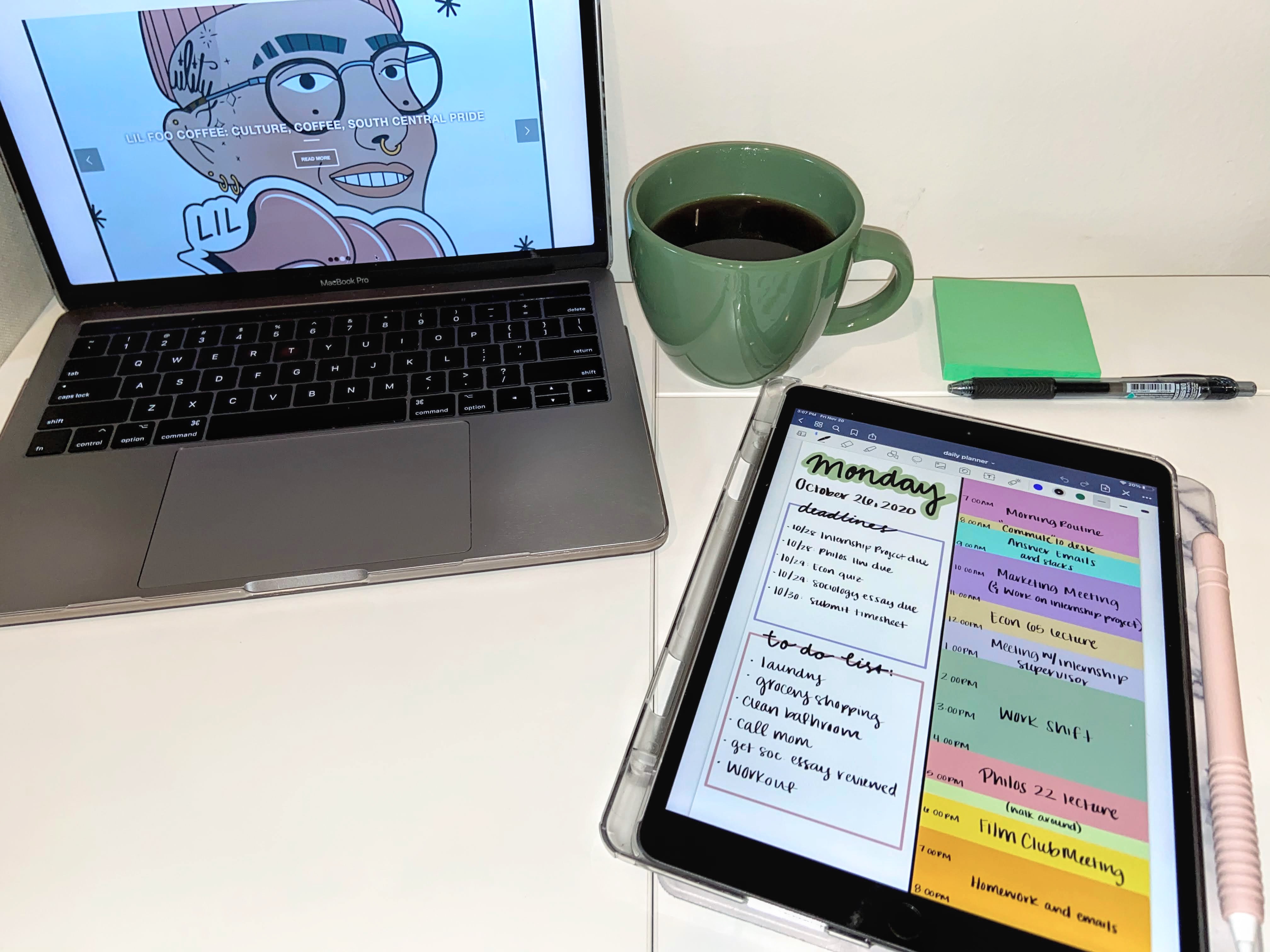All in a Day’s Work

Photo taken by Angela Vargas
The Slack notification sound dings, I immediately check, it could be from any of my five channels that I’m currently in. I answer and my friend looks over and says, “you’re not at work right now, build boundaries and answer it later.” I was struck and somewhat offended. However, she’s right, working from home (WFH) has made it so that I can’t distinguish between work and social life.
Hallie Bateman made the joke in her comic describing the concept of working from home, “First of all, there is no longer a separation between ‘work’ and ‘life.’ It’s one word now: ‘worklife.’ But the ‘work’ is silent now, though. It’s all just ‘life.’” The issue is, she’s not wrong.
The experience of working from home is a privileged one that existed before the pandemic but has recently gained prominence. An MIT study found that half of the population who were employed pre-COVID moved towards a remote work environment. The large surge of new WFH workers has caused a lot of people scrambling to adjust in building boundaries between their work and home life. The physical separation between the “office” and our “homes” is something that doesn’t exist anymore.
In an attempt to keep up with this new WFH atmosphere, there has been a surge of self-help/productivity tips. These tips are rooted in privilege, given that a lot of low-wage jobs cannot rely on remote work. However, these tips do shape and reflect the ways that we as a society view productivity. It’s important to acknowledge that these tips are easier said than done. We should also recognize that WFH isn’t always glamorous or that there isn’t a “one-size fits all” answer to the question: How do we manage WFH in healthy and productive ways?
“You should build boundaries in your home; build a workspace and a resting space, so you don’t associate work with your rest space.”
This gets a little tricky when college students typically share small rooms with multiple students. Most of our space is multi-functional. However, it’s not impossible.
The biggest thing I’ve learned is not to do any school work or work-related tasks on my bed. Day 1 of remote learning taught me that when I attempt this, I will fall asleep in the middle of my lecture.
Consequently, building that boundary even between our desks and our beds has proven useful. When we sit at our desk, we can enter a work-mindset . This means taking the extra step of not having distractions on your desk. This can be difficult however, as many college students use their desk as a form of extra storage.
“You should get up from your desk, and walk around a little.”
This one is very interesting, do they mean actually go for a walk outside or just walk little circles around in my apartment?
I mean I guess I understand the sentiment, I am exhausted of this $5 desk chair I bought from the girl who last leased this apartment.
However, when work breaks or breaks in between classes are only 30 minutes, it’s hard having to choose between taking a walk, laying down and recovering, or making yourself something to eat.
It seems extreme to schedule when to eat in a planner, but in an environment where you only have small pockets of time to do so, it becomes necessary.
“Set business hours!”
I’ve lost all sense of time ever since the pandemic started — business hours are a lost cause.
Where is the boundary necessarily? If my boss sends a Slack message at 6PM, will I simply say: “that is out of my business hours, I shall not answer.”
Business hours are also really hard to navigate when you work part-time and are a college student. Classes don’t always fall in the 9-5 “work day” frame, so we are required to do academic work well after business hours. Thus, if we are not working, we are doing academic work, and it seems as if the day never has a healthy closing time that we can look forward to clocking out of.
“Make sure to encourage connection through remote work.”
Staring into the abyss of black screens during Zoom lectures and discussions have made this one nearly impossible. However, there’s one connection we all seem to care about the most — our internet connection.
The social aspect of going into an office is gone. However, this has made a lot of students want to join clubs or other social organizations. We are all tied to our technology during WFH that social Zoom calls are the one light.
“Get ready as if you’re going into the office to be in the right mindset.” vs “Invest in leisure wear, since you will be at home.”
To the influencers saying we should invest in leisure wear since we’re working from home, my massive hoodie and bike shorts salute you.
However, these contradictory tips both have some validity.
No one wants to feel uncomfortable while they are at home, so putting on clothes you would wear to work seems somewhat pointless, especially if you are not on camera.
However, being in loungewear all the time does tend to blur the lines of the being at work mindset.
——————————————————————————————————————————-
In short, there is no proper way to navigate WFH. Finding what works for us is something that takes time. It also varies from student to student, worker to worker. This isn’t our normal, so as we scramble for ways to stay productive, we should take the time to take a breather. We aren’t robots, just because work has made its way into our homes, doesn’t mean it should permeate our life. As we look for the work and home balance, it’s important to value our own time and build the boundaries that will keep us sane.
To view this article in its full designed glory, head over to our Issuu to view our Fall 2020 Boundaries Issue!



Leave a Reply
Want to join the discussion?Feel free to contribute!